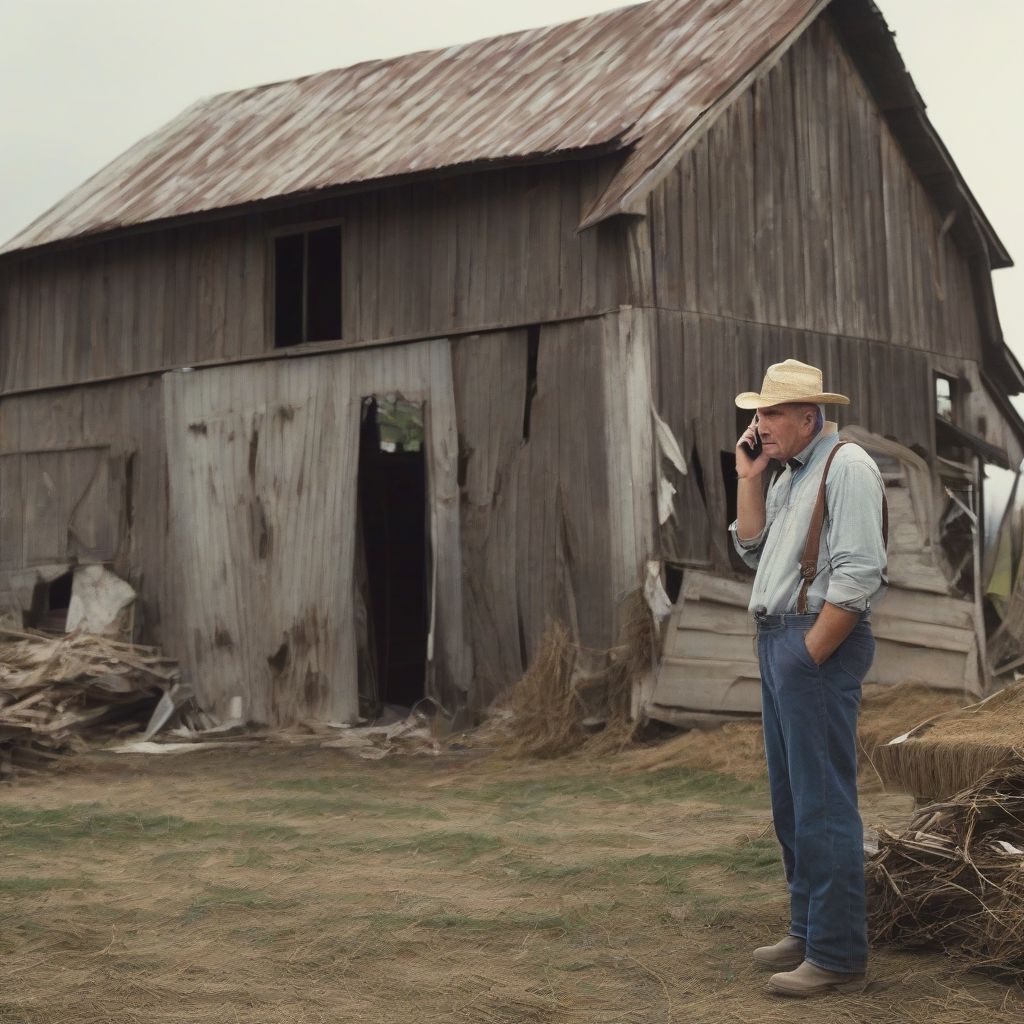Farming and ranching are tough businesses. You face unpredictable weather, fluctuating markets, and the ever-present risk of accidents. That’s why having the right insurance coverage is crucial. If you’re insured with State Farm and experience a covered loss, filing a claim promptly and efficiently is essential to get you back on your feet. This guide provides a step-by-step walkthrough of the State Farm File Claim process, addressing common questions and concerns specific to farmers and ranchers.
Understanding Your State Farm Insurance Policy
Before filing a claim, it’s vital to understand your policy coverage. State Farm offers various insurance products for farmers and ranchers, including:
- Farm and Ranch Owners Insurance: This comprehensive policy typically covers your home, personal property, farm buildings, livestock, machinery, and liability.
- Crop Insurance: Protects against losses to crops from natural disasters, pests, and diseases.
- Livestock Insurance: Provides coverage for the loss of livestock due to various perils, such as accidents, theft, or disease.
Review your policy documents carefully or contact your State Farm agent to determine your specific coverage limits, deductibles, and exclusions.
When to File a State Farm Claim
Knowing when to file a claim is crucial. Here are some situations where filing a claim might be necessary:
- Property damage: Damage to your home, farm buildings, equipment, or crops due to fire, windstorms, hail, vandalism, or other covered perils.
- Livestock loss: Death or injury to livestock due to accidents, theft, natural disasters, or disease outbreaks.
- Farm vehicle accidents: Accidents involving your farm trucks, tractors, or other vehicles used for farming operations.
- Liability claims: If someone is injured on your property or you’re held responsible for damages caused by your farming activities.
State Farm File Claim: Step-by-Step Guide
Filing a claim with State Farm is generally straightforward. Here’s a detailed breakdown of the process:
1. Report the Claim Promptly:
The sooner you report a claim, the faster the process can begin. Contact State Farm immediately after discovering a loss. You can report your claim through the following methods:
- Online: Visit the State Farm website and locate the “File a Claim” section.
- Mobile App: Use the State Farm mobile app to report a claim from your smartphone or tablet.
- Phone: Call State Farm’s 24/7 claim hotline.
2. Provide Detailed Information:
When reporting the claim, be prepared to provide the following details:
- Policy number: This helps State Farm locate your policy information quickly.
- Date and time of the incident: Provide the most accurate information available.
- Location of the incident: Specify the exact location where the event occurred.
- Description of the incident: Clearly describe the events that led to the loss.
- Damages and injuries: List all damaged property or injuries sustained.
- Witnesses: Provide contact information for any witnesses to the incident.
3. Document the Damage:
Before removing debris or making repairs, take photographs and videos of the damage. This documentation is valuable for supporting your claim. Keep detailed records of all expenses related to the loss, including repair estimates, receipts, and invoices.
4. Cooperate with the Adjuster:
State Farm will assign a claims adjuster to your case. The adjuster will contact you to schedule an inspection of the damage. Answer their questions honestly and provide any requested documentation promptly.
5. Review the Settlement Offer:
Once the adjuster assesses the damage, State Farm will present you with a settlement offer. Carefully review the offer and ensure it covers the cost of repairs or replacement. You can negotiate the settlement if necessary.
6. Receive Your Claim Payment:
After accepting the settlement offer, State Farm will issue your claim payment. The payment method may vary depending on your policy and the nature of the claim.
Frequently Asked Questions about State Farm File Claims
How long does it take State Farm to process a claim?
The time to process a claim can vary depending on the complexity of the claim. However, State Farm strives to process claims quickly and efficiently. Simple claims might be resolved within a few days, while more complex cases could take several weeks or longer.
What if my claim is denied?
If your claim is denied, don’t panic. State Farm will provide a written explanation outlining the reasons for the denial. You have the right to appeal the decision. Review your policy and gather any supporting documentation that might strengthen your case. Contact your State Farm agent or the claims adjuster to discuss the appeal process.
Can I choose my own repair shop?
While State Farm might have a network of preferred repair shops, you generally have the right to choose your own. However, using a State Farm preferred shop might streamline the repair process. If you choose your own shop, ensure they are reputable and qualified to perform the necessary repairs.
 farmer on phone
farmer on phone
Tips for a Smooth Claim Process
Here are some additional tips to help ensure a smooth and efficient claim experience:
- Keep your policy information accessible. Store your policy documents in a safe and easy-to-locate place.
- Take photos and videos of your property and assets regularly. Having visual documentation can be beneficial when filing a claim.
- Maintain detailed records of your farming operation. This includes receipts for purchases, sales records, and any documentation related to your farm’s finances.
- Communicate openly and honestly with your State Farm agent and the claims adjuster.
- Be proactive in gathering and providing any requested documentation.
Conclusion
Dealing with property damage, livestock loss, or other covered incidents can be stressful for farmers and ranchers. Understanding the State Farm file claim process and following the steps outlined in this guide can help alleviate some of that stress and ensure a smoother claims experience. Remember to review your policy, document everything thoroughly, and communicate openly with State Farm throughout the process. By being proactive and informed, you can focus on what matters most – getting back to running your farming or ranching operation.